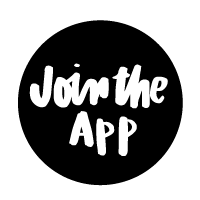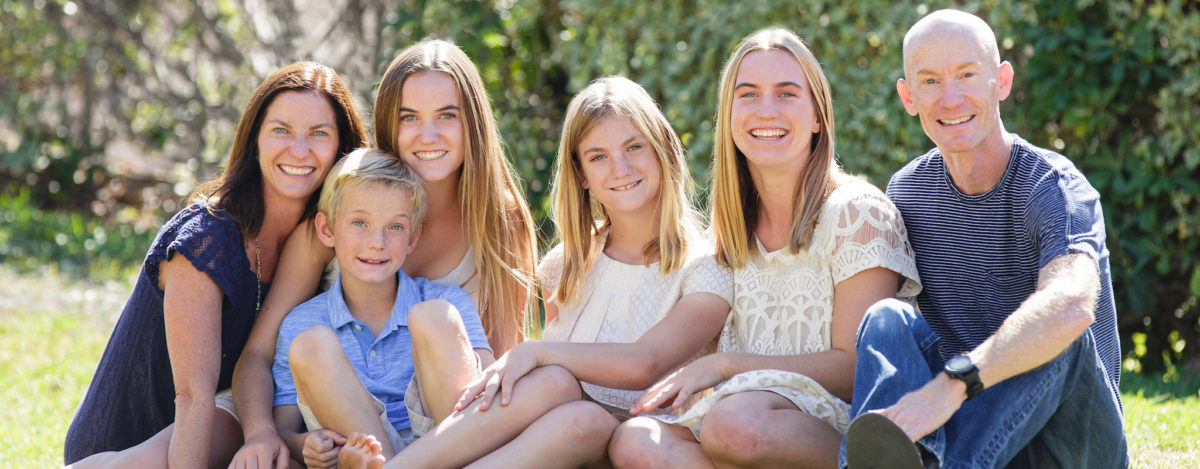Type 1 Diabetes—The Unexpected Baby?
“It needs your love and attention,” says Rebecca Foster, a mother to four children, and one who has type 1 diabetes. “You have to care for it and you have to love it and embrace it, whether it’s acting up, or crying or whatever it’s doing.”
Rebecca wasn’t referring to one of her children—rather, she was describing a way to make sense of something that often doesn’t make a whole lot of sense: type 1 diabetes.
“I kind of came up with this analogy in my head of how, you know, you bring a baby into a family, the mother has the baby and the parents are responsible for the baby, but the baby affects the entire family.”
14-year-old Mia, the second oldest, was diagnosed with type 1 in July 2016, just a month before she started high school.
“My daughter was diagnosed during a routine physical for high school through a urine test. In many ways, we were really lucky because she wasn’t sick; [she had some weight loss and was definitely moody} but nothing you wouldn’t have chalked up to a teenage girl about to start high school.”
The Fosters live near Los Angeles, where they enjoy skiing, cooking and doing water sports together. The type 1 community welcomed them right away, but they realized they needed something else to help introduce diabetes to their very active lifestyle.
After all, diabetes is something that affects the entire family, not just the family member living with it. Together with her kids and her husband, John, Rebecca felt it was important to recognize diabetes as “something we all need to think about.”
Efficient training by her diabetes team had Mia packed and ready to head off to start boarding school near Santa Barbara for the first time, diabetes in tow. She’s independently managing her diabetes with the help of blood glucose apps and support from her family and school, but it’s still something Mia and the Fosters are getting used to.
Like many families facing a type 1 diagnosis, Rebecca, John and their kids are still learning how to think about diabetes, manage diabetes, talk about diabetes and deal with diabetes while continuing to do the things they love to do. When the whole family took a ski trip together over the holidays, Rebecca had a “light bulb moment:”
“I said to my family, ‘Diabetes really is to me like a new baby in our family; it’s our fifth kid. And instead of being a baby that we’re all happy and excited about, it’s kind of this colicky baby that’s sort of a pain … and not only do we have the baby, but we have given our teenage daughter this baby to take care of. So you are responsible for this baby, but it kind of is our baby.’
And I think it sort of cracked for the first time a little bit of the ice, it’s like, ‘And this is your baby and you can name the baby.’”
Mia decided to name her baby “Wyatt,” something her mom embraced right away.
“She kind of laughed and said, ‘Oh now I’m a teen mom!’ It sort of has become this joke: we can say, “How’s Wyatt doing today?” It gives it a little bit of humor that she can roll with, and I think even just not hearing the word “diabetes” helped her.”
Rebecca sees talking about “Wyatt” instead of “diabetes” is another way to relate to Mia—whether she’s away at boarding school or hanging out with her friends at home.
“I use it around her friends—you know, those times when she doesn’t want to be different. When you just have to talk about it or ask questions: that’s when we use it more in code: ‘How’s Wyatt?’ Nobody knows what we’re saying. It doesn’t register for anybody else.”
Wyatt has also helped Mia’s siblings articulate how type 1 affects them. Rebecca says, “Everybody was able to go around share. My 10-year-old said, ‘I get sad because Mom has to be with you more than me.’ My older daughter said she lies awake at night sometimes and cries because she feels bad for Mia, and she’s scared for her. And I felt like everybody had a real opportunity to sort of share how this has impacted them, and we felt free to talk about it in the context that it was this new baby in the family.”
Using their imaginations has helped the Fosters (including Mia’s siblings: Celia, 15, Mary, 12 and Johnny, 10) deal with the unpredictable situations diabetes inherently brings. When Mia’s blood sugar dropped on a ski trip, the whole family took a break to go into the lodge and regroup. The emotional difficulties brought on by the low blood sugar, although the public might misunderstand them, didn’t faze any of the kids.
“We were going to get through it. It didn’t matter if we were going to sit there for 30 minutes—all six of us sat there and rode it out,” Rebecca says. “It isn’t just a singular disease that somebody has and we all go on our merry way. I think everybody understands the analogy a little bit, of how you have to tend to a baby and how you have to tend to diabetes. I think it helped Mia understand a little better that we don’t mean that as a ‘This is your fault! Look at what you’ve done to us!’ We somehow have a better understanding of it … it’s just another fact.
I think it’s just a really helpful analogy for our family that I hope might work for somebody else. To talk about it in a different way.”
 How does your family talk about type 1? Share your story with the community through the Beyond Type 1 app!
How does your family talk about type 1? Share your story with the community through the Beyond Type 1 app!





